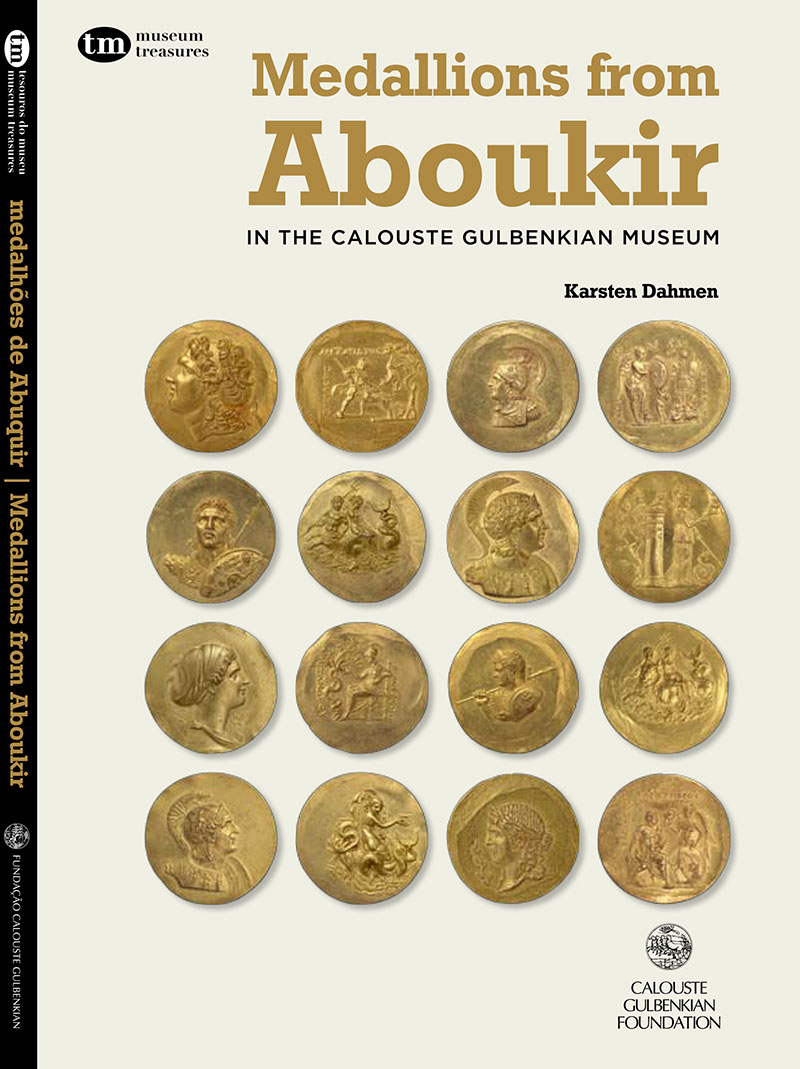Medallions from Aboukir

The Calouste Gulbenkian Museum possesses many treasures, but the 11 gold medallions from a hoard discovered in 1902 in Egypt constitute a remarkable example of ancient art and first hand source of Alexander related iconography. Of the original 20 medallions, Calouste S. Gulbenkian managed to collect 11, thus making Lisbon today the main repository of these pieces. They are the only such medallions in gold which have survived from the Roman period. In contrast to other medallions in precious metals, they are not based on a defined coin standard, and cannot be considered multiples of regular aurei or solidi.
In contrast, the Aboukir medallions are of diverse weights, possess a varying non–coin like fineness, and most importantly they are not products of any official Roman mint. In addition, they bear Greek, not Latin legends, naming the king Alexander, and offer a fascinating insight into a highly elaborate iconographic language telling the story and legend of Alexander the Great (356–323 BC) and the appreciation of him in the Roman period. Fittingly enough, the only Roman emperor depicted on these medallions is Caracalla, who himself was (in)famous for his very personal ‘Alexander-mania’.
Technical information
- Texts:
- Karsten Dahmen
- Language:
- Bilingual edition (English/Portuguese)
- Editorial coordination:
- João Carvalho Dias com a colaboração de Carla Paulino
- Edited:
- 2013
- Pages:
- 90
- ISBN:
- 978-972-8848-91-0